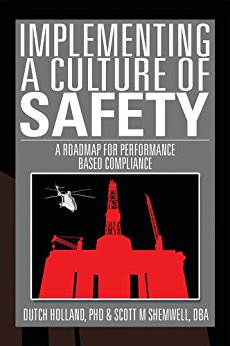Two Phase Culture of Safety Implementation Methodology
Working with our client base as well as experts in the field, The Rapid Response Institute (RRI) has developed a two phase methodology for the implementation and management of the transformation to a Safety Culture aka, Culture of Safety.
- Culture of Safety (COS) Project Implementation
- Business Value Architecture (BVA) Implementation
Together this two phase approach will successfully transform and sustain a robust Culture of Safety for those firms in the Critical Infrastructure sectors. A brief overview (listing of the Methodology Table of Contents) of the approach follows.
Phase I – Implementing a Project
Table of Contents
Communicate a Clear Vision of Our COS Future
- Construct the detailed vision of the COS Future
- Construct the case for change to the COS Future
- Ensure management understanding and expectations of the COS Future
- Communicate the COS Future vision the right way to the entire organization
- Ensure employee translation of the COS vision
Altering processes and procedures for Our COS Future
- Identify process alterations needed for a transition to the COS Future operations
- Alter and test processes critical for a transition to COS Future operations
- Alter Process Measures, Goals, and Objectives to align with the COS Future operations
- Alter and Test the Work Procedures for Altered Processes needed for COS Future operation
- Eliminate old process measures, goals, objectives and procedures that are NOT needed for COS Future operations
Altering the Facilities/Equipment/Tools (FET) for Our COS Future
- Identify the FET alterations needed for the transition to the COS Future operations
- Alter and test all the FET needed in the transition to COS Future operations
- Alter and test each and every FET control for alignment with the process of COS Future operations
- Alter or create written guidelines for all FET involved in the COS Future operations
- Eliminate old FET and operating guidelines that are NOT needed for COS Future operations
Altering Performance Management for Our COS Future
- Identify and Alter Individual Roles and Goals for Transition to COS Future operations
- Complete One-on-one Contracting for Every Person affected by the Transition to COS Future operations
- Train All Employees in the Roles they will play after the Transition to the COS Future operations
- Identify and Alter the System for Monitoring Performance in COS Future operations
- Alter and Communicate Compensation Payoffs for work in COS Future operations
Project Management of the Implementation of Our COS Future Operations Project
- Develop Project Charter for executive approval of the COS Future Operations Project
- Set and Communicate the Master Schedule for Change Work required for transition to COS Future
- Use week-at-a-time scheduling with one-on-one assignments for Change Work for COS Future Operations. Regularly check transition progress and re-schedule as needed to maintain alignment with COS Future
- Confirm, stabilize and celebrate the completed change to COS Future Operations
Additional information as well as further details are available upon request.
Phase II – Implementing a Business Value Architecture
Table of Contents
Strategic Business Architecture
- Company vision, goals, and strategy explicitly reflect the company’s intention of exploiting COS Technology for improved business results
- Executive commitment to COS is shown by investment in COS architecture and by willingness to use pro forma results of COS initiatives in financial projections
- Incentives are in place in the management ranks to motivate COS exploitation to meet company goals
- Robust portfolio / program management is in place to make capital investment decisions, and bring them to life, including COS
- Explicit Decisions are made by executives to “Deploy” or “Give Permission to Adopt” for each COS initiative that finishes development
Work Process Architecture
- Comprehensive map of core work processes is in place, i.e., for “value-added,” “management,” and “enabling” work processes
- Integrated goals with metrics are in place across operational work processes
- Aligned structure, roles, KPIs and incentives are in place and in use around integrated goals and work processes
- Proven method for targeting and developing business improvement opportunities (BIOs) and requirements is in place
- Robust Business-Readiness implementation project management (for processes, technology and people) including comprehensive risk management is in place
Technical Process Architecture
- Business needs discernment that accurately comprehends the range of operational transactions and decisions that could be made by the business / operations
- Technology architecture design that optimizes the company’s technical capability to support all types of work processes needed by the business to meet its goals
- Technology acquisition that both secures needed technologies to support architecture design and drives vendor innovation
- Systems readiness method and project management is in place that can produce applications and systems that meet business improvement opportunity requirements
- Proven and secure implementation process is in place that does not put operations at risk during COS technology implementation and testing
Intelligent Interfaces for COS Business Value Architecture
- Create Business Interface between Executive Team and Operations Organization
- Create Mission Interface between Operations and Technical Organization
- Create Resources Interface between Technical Organization and the Executive Team
Additional Information
There are many books about cultural transformation; however, there is only one book at provides a roadmap for performance-based compliance with the new regulations AND the development of a sustainable Culture of Safety for your organization.
To stay safe and productive, energy companies must step up their game with new and improved ways of operating:·
- High Reliability Organization
- Strong-Bond Governance
- Asset Integrity Management·
- Integrated Operations·
- Authorization, e.g., Two-Key Requirements
Surrounded by a true Culture of Safety!

